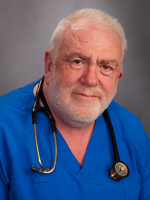 Charles Sturt University (CSU) researchers have made it easier for doctors to measure the strength of a patient’s heart, potentially saving thousands of lives. The world leaders in the field of clinical haemodynamics have enhanced the practical use of a life-saving medical invention by developing an index to assist clinical staff to monitor and intervene in a range of cardiovascular conditions.
Charles Sturt University (CSU) researchers have made it easier for doctors to measure the strength of a patient’s heart, potentially saving thousands of lives. The world leaders in the field of clinical haemodynamics have enhanced the practical use of a life-saving medical invention by developing an index to assist clinical staff to monitor and intervene in a range of cardiovascular conditions. Measurement of the Smith Madigan Inotropy Index can be performed in less than two minutes using the non-invasive USCOM, and replaces complex catheter based measurements that are invasive, time-consuming, costly, and are associated with the clinical risk of complications.
Measurement of the Smith Madigan Inotropy Index can be performed in less than two minutes using the non-invasive USCOM, and replaces complex catheter based measurements that are invasive, time-consuming, costly, and are associated with the clinical risk of complications.“The Inotropy Index allows for greater application of the USCOM in clinical practice. It will change the way we look at cardiovascular function, and is already saving lives and changing the management of sepsis and septic shock,” Ms Madigan said.
“We are currently working on incorporating these parameters into new clinical treatment algorithms to simplify and improve care of sepsis, heart failure, major surgery, circulatory disorders, and hypertension. At Bathurst Base Hospital, the Inotropy Index is saving lives in these complex diseases and is a major component of the 'BUSH' (Bathurst USCOM Haemodynamic) protocol for treatment of sepsis and septic shock.”
Professor Smith presented a study at the Society of Critical Care Medicine in January 2013 that demonstrated that had the 'BUSH' Protocol been adopted Australia-wide between 2006-2012, it would have potentially saved 8 237 lives. The derivation and validation of the method was published in the British Journal of Anaesthesia by Professor Smith and Ms Madigan in May 2013, and represents six years of clinical research between the authors.





Social
Explore the world of social